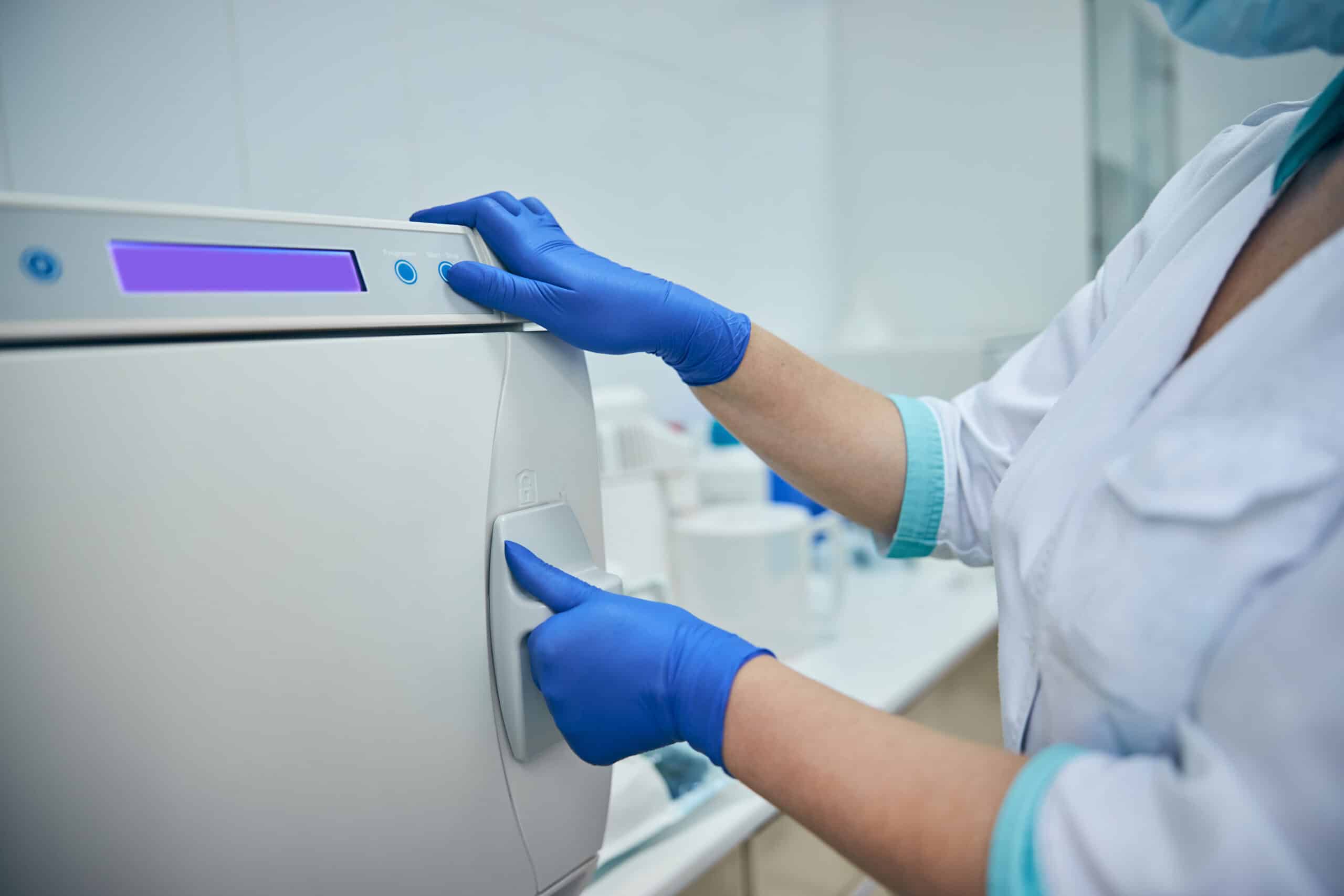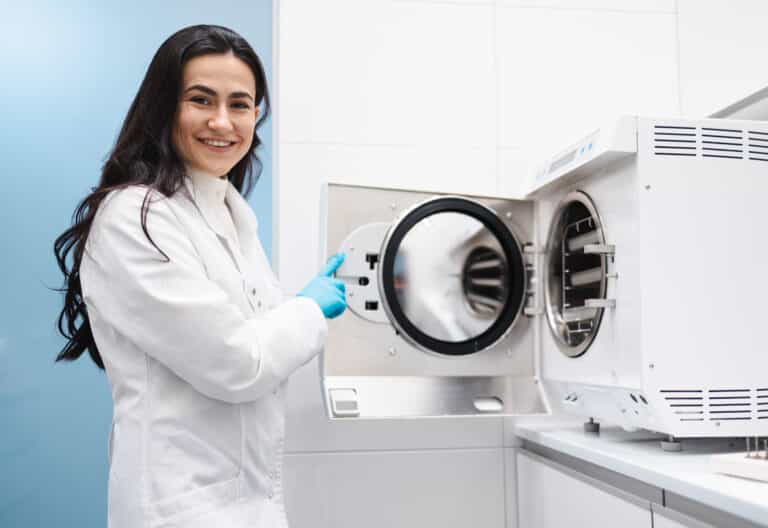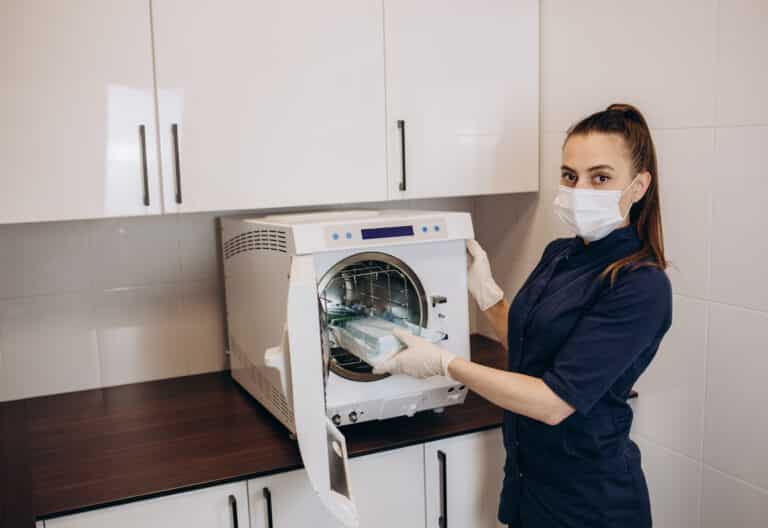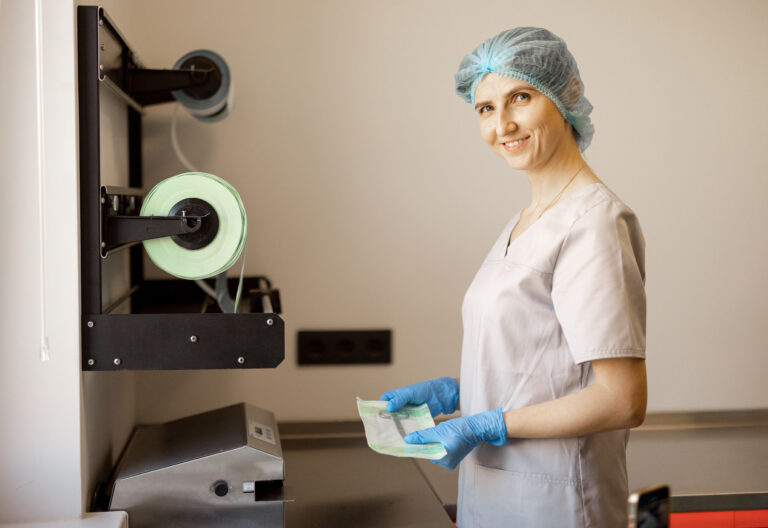The role of a sterile processing technician (SPT) is essential in healthcare, ensuring that medical instruments are properly sterilized, organized, and ready for use. As hospitals across the country look for skilled candidates to fill this vital position, the demand for certified sterile processing technicians is on the rise (According to the BLS). However, landing a job in this field is becoming more competitive. So, how can you stand out from the crowd?
So let’s outline three key steps to becoming a sterile processing technician, emphasizing how the right approach can set you apart in this fast-growing career.
Why Pursue a Career as a Sterile Processing Technician?
Sterile processing is a lucrative and stable career with plenty of opportunities for growth. According to the BLS, not only are sterile processing technicians in high demand, but the work they do is also crucial for patient safety and the successful operation of healthcare facilities. Sterile processing technicians are responsible for cleaning, sterilizing, packaging, and distributing surgical instruments and other medical equipment. It’s a hands-on, detail-oriented job that plays a key role in maintaining the health and safety of patients and medical staff alike.
However, because of the critical nature of the role, most employers seek candidates who have both formal training and hands-on experience in a clinical setting. The field’s competitive nature means that you need more than just the basics to land a position and grow in this career. Let’s explore the three steps that can help you stand apart from the competition.
Step 1: Get a University Certificate
The first step to becoming a sterile processing technician is obtaining formal education and training. While many entry-level candidates have certificates from community colleges, a certificate from a nationally recognized, accredited university can give you a significant edge in the job market.
A university certificate not only shows that you have completed rigorous coursework, but it also builds trust in your skills and knowledge. Employers often view candidates with a Sterile Processing Technician certificate as more qualified because these programs tend to have higher standards. In a competitive job market, a university certificate is a badge of honor that can help you stand out on your resume and during interviews.
Why a University Certificate?
While community college programs can be a good starting point, a university certificate carries more weight in terms of prestige and recognition. Universities typically have more extensive resources and offer programs that are recognized nationwide. This broader recognition means that your certificate will be respected not only by local employers but also by healthcare facilities across the country.
By choosing a university certificate, you demonstrate to potential employers that you are serious about your career and have received top-notch training.
Step 2: Gain Real Hands-On Experience
In sterile processing, hands-on experience is just as important as formal training. This is a clinical role, and there is no substitute for learning by doing. Having real-world experience in a healthcare facility is critical, as it gives you a feel for the day-to-day responsibilities of a sterile processing technician.
How Do You Get Hands-On Experience?
One of the best ways to gain hands-on experience is through an externship opportunity. An externship opportunity allows you to work in a real healthcare facility, typically on an unpaid basis, for a set period. During this time, you’ll perform many of the duties of a sterile processing technician under the supervision of experienced staff.
Externship opportunities are valuable for several reasons:
- Practical Experience: You’ll be able to apply the concepts you learned during your training to real-life situations.
- Understanding the Role: Externship opportunities provide insight into what it’s like to work in the healthcare environment, giving you a clearer picture of what to expect once you’re employed.
- Demonstrating Commitment: Completing an externship shows potential employers that you are committed to your career and have taken extra steps to gain relevant experience.
Externships not only help you develop practical skills, but they also provide networking opportunities. You’ll meet professionals who can vouch for your abilities and potentially offer job referrals.
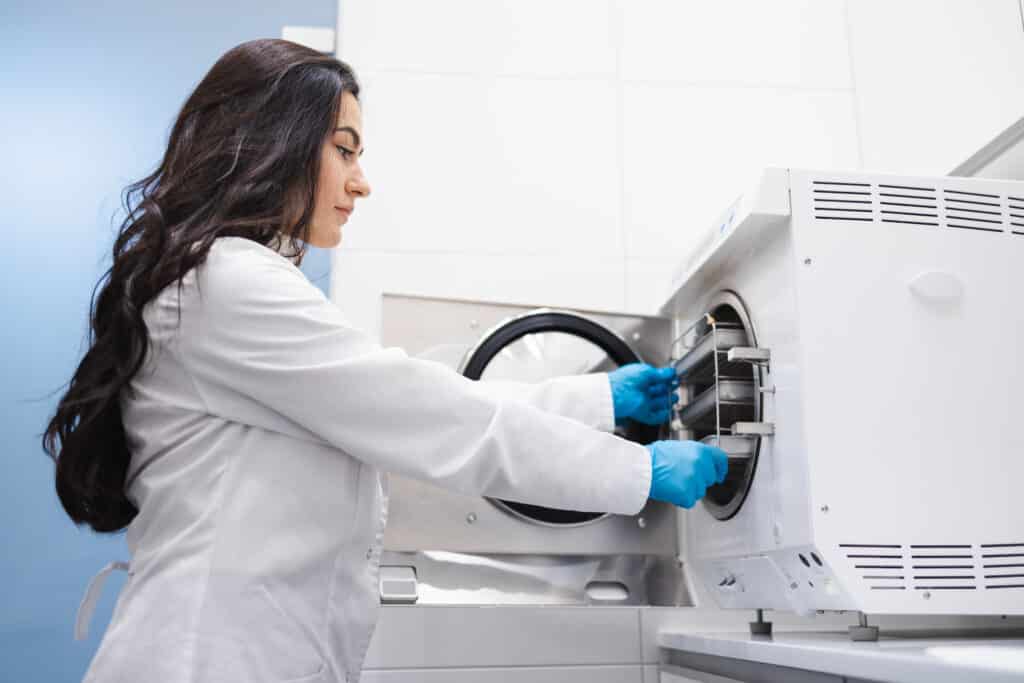
Step 3: Obtain CRCST Certification
Perhaps the most critical step to becoming a sterile processing technician is obtaining professional certification. The Certified Registered Central Service Technician (CRCST) certification is the industry standard for sterile processing professionals. It is awarded by the Healthcare Sterile Processing Association (HSPA), and it serves as a seal of approval that you have the necessary skills and knowledge to perform the job effectively.
Why Is CRCST Certification Important?
Having a CRCST certification sets you apart from other job candidates. It demonstrates that you have passed a rigorous exam and met the standards set by a recognized professional organization. Many employers require or prefer CRCST certification when hiring sterile processing technicians, so obtaining this certification can open doors to more job opportunities.
In addition to being a requirement for many jobs, a CRCST certification can also increase your earning potential. Certified sterile processing technicians often earn higher salaries and have more opportunities for advancement compared to non-certified individuals.
Full-Time Programs: Pros and Cons
You may be wondering whether you should enroll in a full-time program to obtain your training. While full-time education can provide you with the necessary credentials, it also comes with challenges that you should consider.
High Costs
One of the biggest drawbacks of full-time programs is the high tuition costs. Full-time programs at universities or colleges can be expensive, often pushing students toward significant student loan debt. On top of tuition, there are additional costs to consider, such as books, transportation, and other expenses that come with attending on-campus programs.
Time Commitment
Full-time programs often take up to two years to complete, which can be a significant time commitment. For adults with responsibilities such as work, family, and other obligations, attending a scheduled program with fixed class times can be challenging.
Lack of Flexibility
Many full-time programs are not designed with working adults in mind. If you have a job or family responsibilities, attending classes on a strict schedule may not be feasible. As a result, many individuals look for alternative paths to obtain their certification and training.
The Preppy Approach: A Faster, More Affordable Path

If you’re looking for a more flexible and affordable option, consider the Preppy approach. The Preppy approach allows you to complete your sterile processing technician training online, from the comfort of your own home. With this program, you can learn at your own pace and on your own schedule, making it an ideal choice for working adults.
Benefits of the Preppy Approach
- University Certificate: You will receive a university certificate for your training, giving you the credentials that employers look for.
- Externship Opportunities: Preppy helps assist students in externship opportunities at local healthcare facilities, giving you the hands-on experience you need.
- Certification Exam Prep: The Preppy approach prepares you for the CRCST certification exam, ensuring that you are ready to earn your professional credential.
- Faster Completion Time: You could complete the Preppy program in as little as 16 to 20 weeks, allowing you to start towards your career much sooner than with a traditional two-year program.
- Affordable: With tuition costs lower than $2,200, the Sterile Processing Technician course is significantly more affordable than many full-time programs.
Conclusion: Stand Out as a Sterile Processing Technician
To recap, there are three critical steps to becoming a successful sterile processing technician: obtaining a university certificate, gaining hands-on clinical experience through an externship, and earning your CRCST certification. With the Preppy approach, you can achieve all of this faster, more affordably, and with the flexibility you need as an adult learner.
If you’re ready to jumpstart towards your career and stand out in the competitive field of sterile processing, consider the Preppy approach and start your journey today.
Also read: Online Sterile Processing Technician Program
About:
Preppy was founded by higher education expert, Grant Aldrich, whose work on college affordability and accessibility has been featured in Forbes, Bloomberg Businessweek, Business Insider, American Express, AOL, MSN, Thrive Global, Reader’s Digest, Inside Higher Ed, Evolllution, EducationDive, and nearly 100 radio shows and podcasts.
Time is money. Instead of programs that could take 2 years, Preppy provides you with education in a few months through immersive online training.
Healthcare, IT, Business, Trades…Preppy gets you ready for the trending careers in our modern economy.
Our team of higher education and startup veterans has created the best solution so everyone can obtain the emerging careers of today and tomorrow.
We look forward to speaking with you. You may also call 800-729-1317.
Do This to Become a Sterile Processing TechnicianSterile Processing Technician
